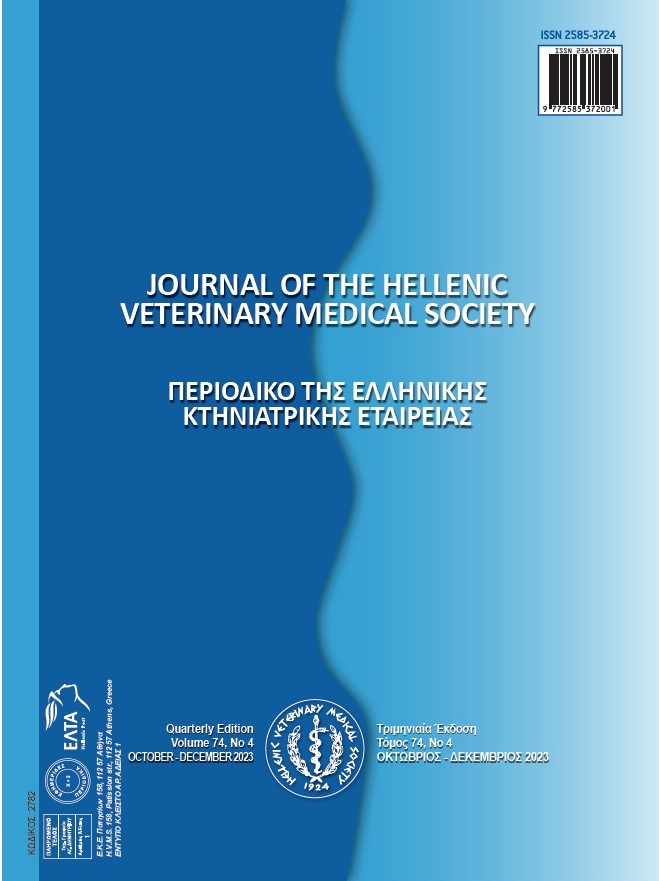Effect of different levels of turmeric (Curcuma longa) on productivity in broiler chickens
Abstract
This research was conducted to evaluate the effect of different levels of turmeric powder on the performance, blood parameters, immunity, intestinal morphology, carcass characteristics, cecum microbial flora, fatty acid profile and sensory evaluation of breast meat of broiler chickens. A completely randomized design was used including four levels of turmeric powder (250, 500, 750 and 1000 mg/kg diet) and a control treatment (without turmeric), in 5 replications. The growth performance was measured periodically and at the end of the 42-day period, three chickens from each experimental unit were killed for carcass examination. In order to check blood parameters at the end of the course, blood samples were taken from three chickens from each experimental unit. To check the immunity of broiler chickens, the weight percentage of immune glands was also evaluated. To measure the morphology of the cecum, one chicken from each experimental unit was killed to check the desired traits. The results of the experiment showed that different levels of turmeric had a significant effect on performance, carcass characteristics, blood parameters, immunity, intestinal morphology, cecal microbial flora, fatty acid profile, and the sensory evaluation of breast meat (P<0.05). The results of the experiment showed body weight, feed intake and feed conversion ratio (FCR) at the end of the period were significant in the treatments that received turmeric powder (P<0.05). Survival percentage, produced body weight per square meter, and final profit was also significant (P<0.05). Relative weight of abdominal fat, villus height and villus height/ crypt depth of the small intestine were significant in the treatments receiving turmeric powder (P<0.05). By adding turmeric powder to the diet of broiler chickens, the microbial population of the cecum also became significant (P<0.05). The concentration levels of uric acid, total cholesterol, glucose, HDL, albumin and liver enzymes alkaline phosphatase and ALT were significant in the birdsreceiving turmeric powder (P<0.05). Turmeric powder in the diet of broilers also had a significant effect on chondroitinic acid, linoleic acid and total polyathenoids (P<0.05). Turmeric powder was significant on the lactobacilli microbial population (P<0.05). The results of this experiment showed that fat content, juicyness, crispyness, chewability, elasticity, mouthfeel and general acceptance were significantly improved (P<0.05). In this research, the treatment receiving 500 mg of turmeric powder per kg had the greatest effect on the measured characteristics of broiler chickens. It can be concluded that the addition of the powder of these medicinal and aromatic plants to the diet of broiler chickens has beneficial effects on the carcass characteristics and meat quality.
Keywords: fatty acid, blood plasma, abdominal cavity, triglyceride, feed conversion ratio, Curcuma longa
Article Details
- Zitationsvorschlag
-
Moniei, F., Gharahveysi, S., Seidavi, A., & Irani, M. (2024). Effect of different levels of turmeric (Curcuma longa) on productivity in broiler chickens. Journal of the Hellenic Veterinary Medical Society, 75(3), 7801–7814. https://doi.org/10.12681/jhvms.35587
- Ausgabe
- Bd. 75 Nr. 3 (2024)
- Rubrik
- Research Articles

Dieses Werk steht unter der Lizenz Creative Commons Namensnennung - Nicht-kommerziell 4.0 International.
Authors who publish with this journal agree to the following terms:
· Authors retain copyright and grant the journal right of first publication with the work simultaneously licensed under a Creative Commons Attribution Non-Commercial License that allows others to share the work with an acknowledgement of the work's authorship and initial publication in this journal.
· Authors are able to enter into separate, additional contractual arrangements for the non-exclusive distribution of the journal's published version of the work (e.g. post it to an institutional repository or publish it in a book), with an acknowledgement of its initial publication in this journal.
· Authors are permitted and encouraged to post their work online (preferably in institutional repositories or on their website) prior to and during the submission process, as it can lead to productive exchanges, as well as earlier and greater citation of published work.








